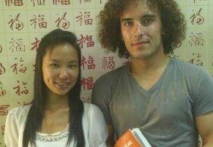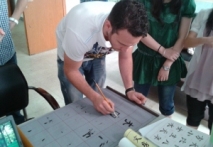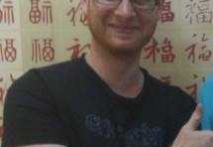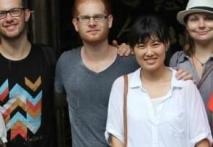Latest News
- Wuxi's Nanchang Street--a historic cultural district that combines classical charm, delicious food, and fun activities
- chinese study
- lastest courses
- Business Assistance/International Consortium of Stem Cell Research
- Foreigner's view of Jiangsu -Changzhou Jintan starts
- estimonials for Our new French Internship student Anais 企业表扬信
- The Double Seventh Festival in China Introduction
- Chinese Proficiency Test (HSK)
- China University Mining and Technology
- Wuxi Library
Students Say
Mandarin Student Zack
Mandarin Education School is a great place to learn Chinese and Chinese Culture.I've learned a lot in this school, my Chine...
Learn Chinese Travel China
If you want to learn Chinese and also discover China, Mandarin Education organize the most funny and cultural study tour.
The...
suzhou Mandarin Jude
I am Jude, I am learning Mandarin in Suzhou Mandarin School,I was learning in Wuxi Mandarin Education too.I like my Chinse Teacher...
chinese class
Improve your reading, speaking and your writing by experiencing our teaching methods,Offer free student Visa.
...
Wuxi Mandarin Jessie
I've learned Chinese for almost 8 years, I can understand what Chinese people say,but when I speak, I feel very uncomfor...
Chinese Internship or Jobs
You are looking for a professional experience abroad? Get the opportunity to discover the Chinese business,Look for an ...
Mandarinedu Student Florent
I love my Wuxi Mandarin Education School. It is the EASY MANDARIN Learning way, I am learning faster than I wanted.My teach...
Mandarin E Learning
Mandarin Education School offers you Online Chinese Courses. It has never been so easier to have Chinese courses ...
Mandarin Student Brad
I am studying Chinese in Mandarin Education School. I can speak quit good Chinese and talk to Chinese people by myself. Thank...
Wuxi Mandarin edu. Student Jennifer
I love learning Chinese in Mandarin Education School.That's a great place to learn and make friends.
...
Add Our School Official
to get more informations

0086 1866 1199 988
0086 510-81151808
Sandy.Swun
519988808
Mandarin Education School
Room 405, 4 Fl,Building No.8,
Maoye Business Center,
Chang jiang No.1,
New district , Wuxi City , China
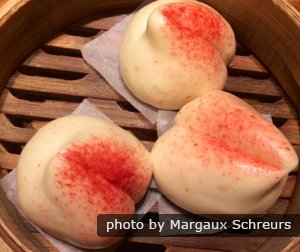
Desserts in China are quite different from in the West. The best Chinese desserts are red bean buns, dragon’s beard candy, egg tarts, candied fruit, pumpkin pancakes, sweet egg buns, deep fried durians, sweet soup balls, almond jelly, and grass jelly.
When you're out at dinner in China, there is no such thing as "different courses", and even “dessert” dishes you have ordered will turn up whenever they're ready. This is fine in China since you will be sharing all the dishes anyway.
1) Red Bean Bun
Chinese: 豆沙包dòu shābāo /doe shaa bough/
One of the main ingredients in sweet snacks and desserts is red bean. hough this may sound unfamiliar, red bean paste and red bean fillings are delicious. You'll certainly encounter this filling when in China, generally when you're expecting chocolate (due to the similarity in color).
Red bean buns are the popular sweet version of the baozi, or steamed bun, consisting of a steamed bun filled with red bean paste. These buns are the most popular way of presenting red bean paste. The buns come in a variety of different shapes and sizes, and are popular throughout the entire country, but especially popular in the North of China.
You can get them in a restaurant, steamed, in different shapes as shown above, or you can get them in the supermarket for on the go. There are also various variations of this bun with different fillings, think pine nut kernel paste, taro paste, or even black bean paste.
2) Dragon's Beard Candy
Chinese: 龙须酥lóng xūsū/long sshyoo soo/
Dragon's Beard Candy is not only a type of Chinese candy, but it is also considered a traditional art as it originates in the Han Dynasty. It is similar to candy floss as it is made of spun sugar, and is very sticky. It melts easily, and becomes even stickier, when it is exposed to high temperatures. This food is generally sold by the side of the road, or at stalls near popular tourist destinations.
3) Egg Tarts
Chinese: 蛋挞dàn tà/dan taa/
The egg tarts were first introduced to Mainland China via Macau, by Portugese colonizers. It is basically a little custard tart, with a hard and sweet crust. They are best eaten warm, and usually found in Cantonese-style restaurants. They are so popular that some shops specialize in them (generally hole-in-the-wall shops), and many convenience stores sell them too, pre-warmed. These are easy to pick up while sightseeing.
4) Tanghulu — Candied Fruit on A Stick
Chinese: 糖葫芦táng húlu /tung hoo loo/
Tanghulu, the "Chinese toffee apple" is an old Beijing-style snack consisting of a skewer with crabapples dipped in liquid sugar and dried. Common varieties, especially at food markets and China's popular food streets, include other fruits coated in sugar, such as kiwi or grapes. These are most authentically bought from carts by the side of the street, and in Beijing they are hard to escape at common tourist sites.
5) Pumpkin Pancake
Chinese: 南瓜饼nán guābǐng /nan gwaa bing /
Pumpkin pancakes are easily described: they are deep fried pumpkin pancakes consisting mainly of pumpkin, sugar, and flour. They are very popular in winter, and are some of the sweetest things around in China. In fact, they may be too sweet if you aren't a big fan. In some cases, the pumpkin pancakes are covered in roasted sesame seeds for extra taste and texture.
They are available in most Sichuan-style restaurants, as this is where they originate from, but they are so popular that many big restaurants serve them.
6) Sweet Egg Bun
Chinese: 奶黄包nǎi huáng bāo /neye hwung baoww/
Another Southern Chinese favorite, the sweet egg bun consists of a warm bun filled with a mix of egg yolk and sugar. Although this may sound odd, these buns are highly popular and definitely worth a try. They are commonly found at Cantonese restaurants, and are perfect for those with a sweet tooth.
7) Deep Fried Durian
Chinese: 榴莲酥liúlián sū/lyoh lyen soo/
Durian, Asia's most infamous fruit, is also popular in China. Although infamous for its strong and bad smell, the fleshy fruit tastes good and is very popular. Many Chinese restaurants sell it as a desert, with a slight deep fried batter crust. The perfect dessert for anyone wanting to step out of their comfort zone. Also makes for the perfect story with friends at home.
This dessert is more common in summer, as this is when the durian is in season. Tip: do not touch it with your bare hands as you will have trouble getting the smell off your hands.
8) Tangyuan — Sweet Soup Balls
Chinese: 汤圆tāng yuán /tung-ywen/
Tangyuan is a warm soup that originates in Sichuan cuisine and is a staple food on any Sichuanese restaurant's menu. It is sweet and filled with fermented rice and sticky rice balls. Sometimes, because of the fermented rice, the soup can be a little bit alcoholic and taste like Southern Chinese mijiu, or rice wine. This soup is usually eaten at large family meals because of its name, which is similar to the phrase for 'family reunion' (tuanyuan twan-wyen 团圆).
Tangyuan is a traditional food eaten during the Lantern Festival, which is celebrated on the 15th day of the first month of the lunar calendar, the first night in the lunar calendar to see a full moon, which the round rice balls are symbolic of.
9) Almond Jelly
Chinese: 杏仁冻xìng rén dòng /sshing rnn dong/
Almond jelly is a cream colored jelly with a soft consistency commonly eaten in across the country from Beijing to Hong Kong, and the South of China. The name is somewhat misleading, as the dessert is generally made using apricot kernel, which is soaked and grounded with water. The milk is then extracted, and a gelling substance is added. This dish is available in most Chinese restaurants.
10) Grass Jelly
Chinese: 烧仙草shāo xiān cǎo /shaoww sshyen tsaoww/
Another type of jelly commonly eaten for dessert is grass jelly. Grass jelly is not only famous in China, but is also a popular food in Southeast Asia and Taiwan. It is made using boiled 'fairy grass' (仙草i.e. mesona chinensis, a type of mint) and adding starch and a baking salt. Grass jelly can be eaten in many different forms, either as jelly, in drinks, or mixed with condensed milk, the latter being commonly available in Chinese restaurants.
